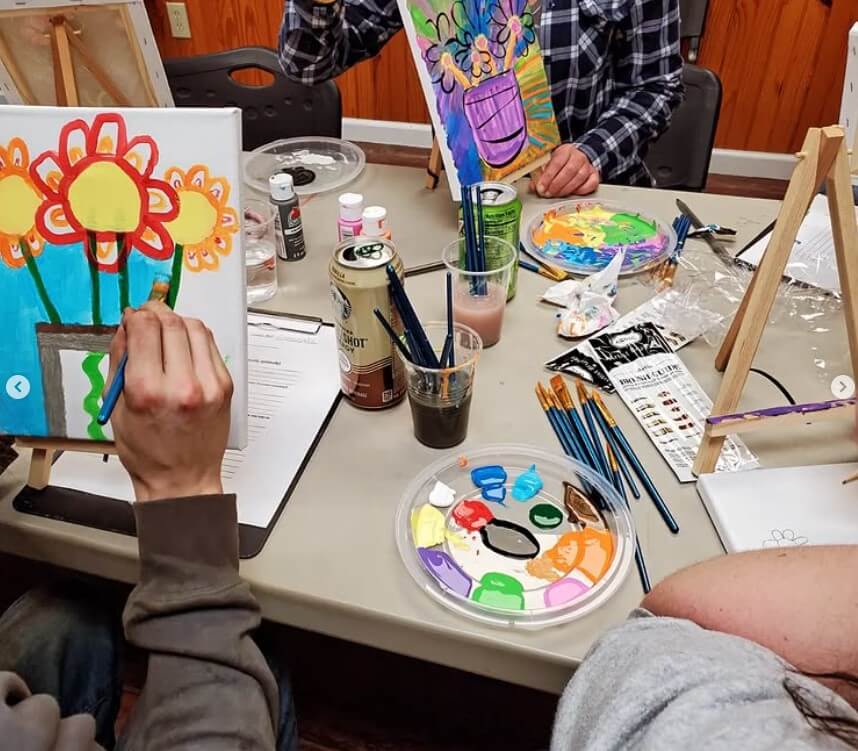News Post
FROM THE ALABAMA LAWYER: A Courtroom Canvas: Painting the Future of Justice in Alabama
Published on August 14, 2025
By Melissa Warnke
When Judge John Graham first learned in 2007 that Jackson County would start a drug court, he wasn’t thrilled.
“I told Chief Justice Sue Bell Cobb we weren’t going to do that,” he recalled. “She patted me on the hand like a petulant child and said, ‘Thank you, John, for agreeing to start a Drug Court in Jackson County. With you in charge, it’s going to be wonderful, and you will find that it might become the most rewarding thing you have done in your career.’”
That long stare-down between the new circuit judge and Alabama’s first female chief justice became a turning point in Graham’s career and, ultimately, in the lives of hundreds of families in Jackson County.
“I tucked my tail and went back to Jackson County, grumping all the way,” he said. But what began with skepticism in 2007 quickly became something far more meaningful. “In the end, it proved to be the most rewarding endeavor of my legal career.”
More Than a Courtroom
Over the next 17 years, Jackson County’s Drug Court helped more than 300 participants graduate and rebuild their lives. Perhaps even more significant was its impact on families: as Judge Graham emphasized, “More than 300 minor children were reunited with their parents, instead of growing up in foster care or state custody.”’
Graham emphasized, “More than 300 minor children were reunited with their parents, instead of growing up in foster care or state custody.”’
The ripple effects extended beyond family reunification. By avoiding incarceration, participants not only found recovery and stability, but also helped save the state millions in prison housing costs.
Art as a Lifeline
 One of the most distinctive parts of Judge Graham’s Drug Court program came not from a legal innovation, but a creative one. In 2015, artist Sonya Clemmons, known affectionately as the “Artlady,” approached Judge Graham with an idea after attending a Drug Court graduation.
One of the most distinctive parts of Judge Graham’s Drug Court program came not from a legal innovation, but a creative one. In 2015, artist Sonya Clemmons, known affectionately as the “Artlady,” approached Judge Graham with an idea after attending a Drug Court graduation.
“She said, ‘I’d like to do something to help people in Drug Court,’” he recalled. “At first, I brushed her off. But on the first business day in January, there she was. She followed through.”
What started as an art program just for the children of Drug Court participants quickly evolved into something more. Participants without children were asking to join.
“They needed that creative outlet just as much as the kids did,” Graham said. “It helped build rapport and gave people a reason to smile. It was fun, and they needed that.”
The program, called Pictures of Hope, became a model for similar efforts across the country. It was even recognized by the National Association of Drug Court Professionals and featured in public displays like the Huntsville International Airport.
A Lasting Legacy
In Dec. 2024, Judge Graham transitioned leadership of Jackson County’s Drug Court to Judge Brent Benson, while continuing to serve as the county’s Presiding Circuit Judge. His nearly two decades of leading the program left a lasting mark on the local community and reflected the wider value of drug courts and accountability programs throughout the state. Today, dozens of drug courts, mental health courts, family wellness courts, and veterans’ treatment courts operate in counties large and small, demonstrating the growing reach of accountability-focused justice in Alabama.
In the most recent legislative session, Alabama lawmakers passed legislation introduced as Senate Bill 200 and House Bill 360 to

unify these courts under the umbrella of Accountability Courts. The legislation was championed by Chief Justice Sarah Stewart and signed into law by Governor Kay Ivey, with both Stewart and Judge Graham present at the signing alongside other judicial and legislative leaders involved in its passage.
Judge Graham sees the move as a natural progression.
“What we do in Drug Court isn’t just about one person getting sober,” he said. “It is about rebuilding families and reconnecting parents with their children. And if we can multiply that impact across the state, then we’ve really done something.”
A Model for the State
The success of Jackson County’s program is just one example of how these courts are reshaping justice in Alabama. While Judge Graham’s work highlights the power of local leadership, the long-term promise lies in the expanding system of accountability-based programs now in place across the state.
These courts aim to reduce recidivism, lower incarceration costs, and, most importantly, restore families and support long-term recovery. With recent legislation consolidating them under a single statewide structure, Alabama is moving toward a justice model centered on treatment, reintegration, and stability.
As this work continues, the goal remains clear: not just to streamline the justice process, but to change lives. As Judge Graham put it, “That’s the most important thing we’ve done to strengthen our community and thereby strengthen our state—a better place for everyone to live and work and prosper and raise a family.”